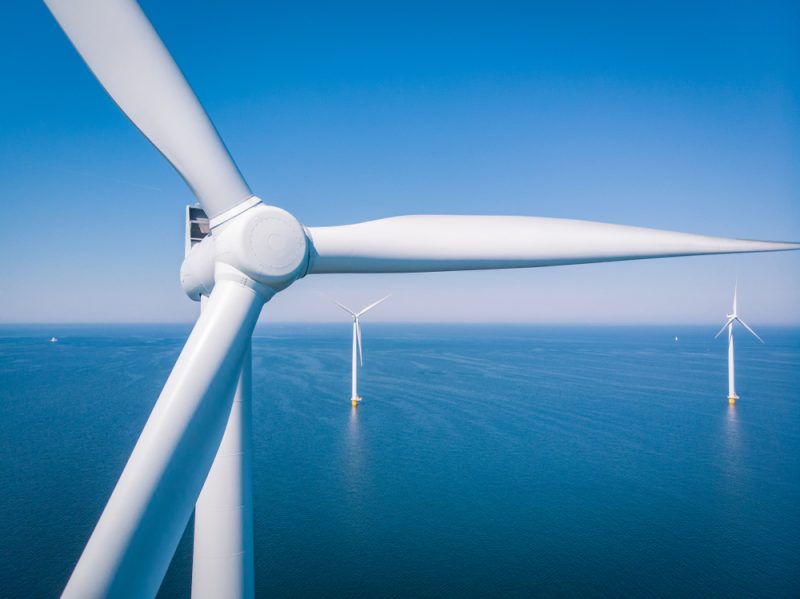Impact on ratepayers a factor in evaluating New Jersey offshore wind bids

New Jersey regulators are evaluating bids from three offshore wind producers that will get the state on the road to meeting its ambitious goal of having 3,500 megawatts (MW) of capacity up and whirling away in the next 10 years.
The New Jersey Board of Public Utilities (NJBPU) is expected to issue a decision this spring on the trio of proposals that will total 1,100 MW and get the Garden State on the path to a greener energy mix. “The board was extremely excited to receive these solicitations,” NJBPU President Joseph Fiordaliso said in a written statement on Dec. 31. “We are one giant step closer to fulfilling Gov. Phil Murphy’s vision of 3,500 MW of offshore wind power by 2030.”
But there was a caveat to Murphy’s proposal. An outside economic analyst will first look over the bids, which were submitted in December by Equinor, Orsted US Offshore Wind, and Atlantic Shores Offshore Wind. The final recommendations will then be based on the value the proposed plans will provide New Jersey energy consumers – namely the effect that adding offshore wind to the energy mix will have on electric bills.
“As NJBPU president, I have an obligation to protect the New Jersey ratepayers,” Fiordaliso had said early last year, indicating that Murphy’s vision for offshore wind would pay off for those consumers. “The benefits of offshore wind extend far beyond the environment. Offshore wind is an increasingly cost-effective form of renewable energy that will stabilize energy prices, bring jobs to New Jersey, and ultimately lower the cost of electricity for New Jersey ratepayers,” he added.
Price is Right?
The threshold of acceptance may actually be fairly low for the three bidders. Offshore wind will be fitting into a pricing landscape that already has New Jerseyans paying the highest electric bills in the Northeast, according to the New Jersey Business & Industry Association (NJBIA). It was the association that urged the NJBPU to evaluate the effect that linking up to offshore wind would have on average electric bills.
“As the cost of this investment will ultimately be recovered from ratepayers who are already paying among the highest prices in the nation, the NJBPU should ensure that its process for soliciting and selecting bids for offshore wind energy considers the economic impact of those projects on ratepayers and also any indirect effects they may have on the market as a whole,” the NJBIA said in a July 26, 2018 letter to the BPU.
But the bottom line for consumers has yet to be drawn. The BPU said discussions on projected pricing for the power generated at sea would not be released to the public. “The offshore wind solicitations are being treated as a competitive, deliberative process and therefore, we will not be releasing the complete applications or any confidential proprietary information,” spokesman Peter Peretzman told Daily Energy Insider.
Welcome Mat
The bids for the proposed wind farm and the likely impact on utility bills will be closely scrutinized by the BPU since the state has big plans for offshore wind as part of its overall clean-energy strategy.
Gov. Murphy signed an executive order in 2018 directing the NJBPU to implement the Offshore Wind Economic Development Act (OWEDA) as part of an overall strategy to make New Jersey a completely “clean energy” state by 2050. The OWEDA would follow up the current 1,100 MW solicitation with another 1,200 MW solicitation in 2022 en route to a total of 3,500 MW of offshore capacity capable of supplying up to 2 million households by 2030.
While building and maintaining wind turbines parked in the ocean costs more than onshore wind farms, the International Renewable Energy Association has noted that those costs are coming down with offshore power prices ranging from 6-10 cents per kilowatt hour for projects coming online after 2020.
And New Jersey’s primary electric utility, Public Service Enterprise Group (PSEG), is already on the road to going green. The company this winter sold off two retired coal-fired power plants to a development company and in 2018 committed to eliminate 13-million metric tons of CO2-equivalent emissions from its carbon footprint by 2030.
“The company has been transitioning to a cleaner mix for some time,” spokesman Mike Jennings told Daily Energy Insider. “Emissions are already down 21 percent from 2014 to 2017.”
PSEG also offered support to Orsted’s proposed Ocean Wind project, which would be located 15 miles off the coast of Atlantic City. If Orsted’s proposal wins approval from the NJBPU, the company will work with PSEG’s non-utility affiliates, which would provide energy management services and potential lease of land for use in project development, Orsted said. PSEG would have the option to become an equity investor in the project.
“New Jersey is fortunate to have excellent offshore wind resources,” Ralph Izzo, PSEG’s chairman, president and CEO, said in a written statement late last year. “If approved Ocean Wind would provide substantial environmental benefits, as well as generate significant economic activity in the state.”
With PSEG and the state’s governor already anteing up on green energy, offshore wind development is the closest thing to a sure bet that will be found in Atlantic City or anywhere else in New Jersey.
